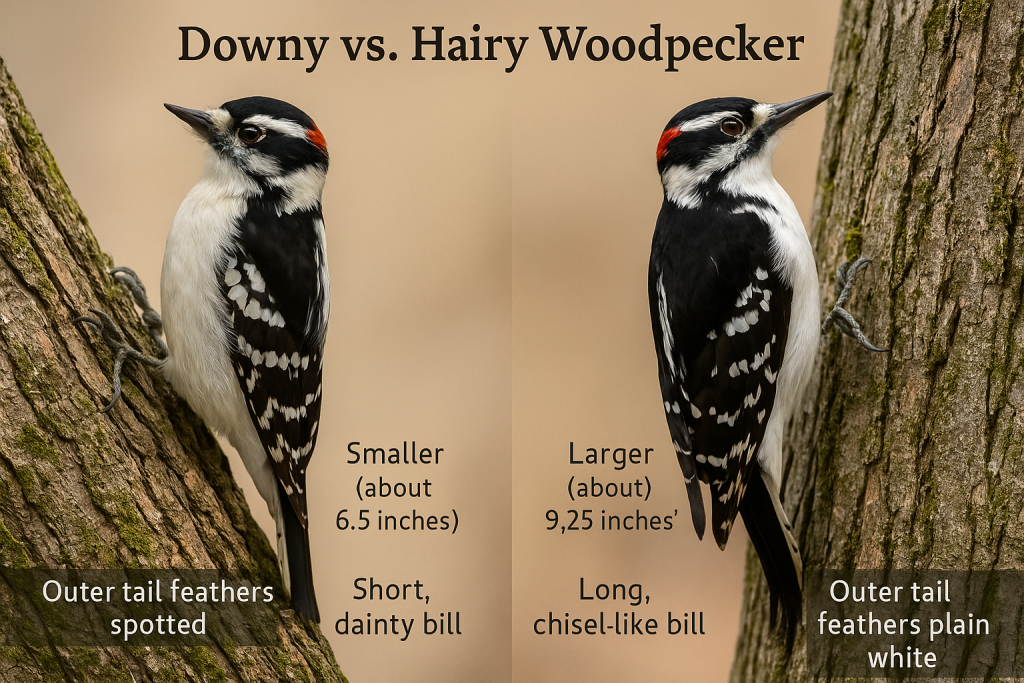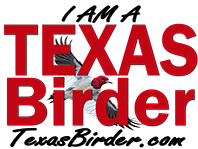
Downy vs. Hairy Woodpecker: A Tale of Two Beaks
| Field Mark | Downy Woodpecker | Hairy Woodpecker |
|---|---|---|
| Size | Smaller (about 6.5 inches) | Larger (about 9.25 inches) |
| Bill | Short, dainty bill (about ⅓ the length of the head) | Long, chisel-like bill (nearly same length as head) |
| Outer Tail Feathers | Usually spotted with black | Plain white, no spots |
| Head Markings | Nearly identical to Hairy’s — includes red patch on males | Nearly identical to Downy’s — males also have red patch |
| Voice | Softer, whiny “pik” and descending whinny | Sharper “peek!” and a faster, more aggressive rattle |
| Behavior | Often found on thinner twigs, more acrobatic | Favors trunks and larger branches, moves with purpose |
| Location Preference | Widespread in residential areas and small trees | Prefers larger woodlands and mature forests |
| Attitude (Unofficial) | Curious and peppy, like it’s had too much coffee | Confident and composed, like it is the coffee |
Narrative: Downy vs. Hairy
Let’s start with size, which is helpful if they’re side by side, but sometimes may be difficult to be reliable. The Downy is smaller, about the size of a House Finch. The Hairy, on the other hand, is bigger—closer to a Robin.
The real trick? The bill.
Downy’s bill is short. Hairy’s bill is longer. A good rule: if the bill is about close to the same length the head, it’s a Hairy. If it looks like it’s still growing into its beak, that’s a Downy.
The outer tail feathers. Downies have little black spots. Hairies do not.

More Stories
What Are Feathered Doppelgangers?
Ruby-throated Hummingbird Vs. Black-chinned Hummingbird IDs
Double-crested vs. Neotropic Cormorants IDs